The Emotional Toll of Isolation on Senior Health

Understanding the Hidden Health Consequences of Isolation in Seniors
As the global population ages, the importance of social connection for mental and physical health becomes ever more evident. Social isolation and loneliness are prevalent among older adults and are linked to a range of adverse health outcomes, from cognitive decline to increased mortality. This article explores the complex relationship between social disconnection and health in seniors, examines effective interventions and policies, and highlights the urgent need for strategies to foster social engagement and mental well-being in aging populations.
Distinguishing Social Isolation and Loneliness: Definitions and Differences
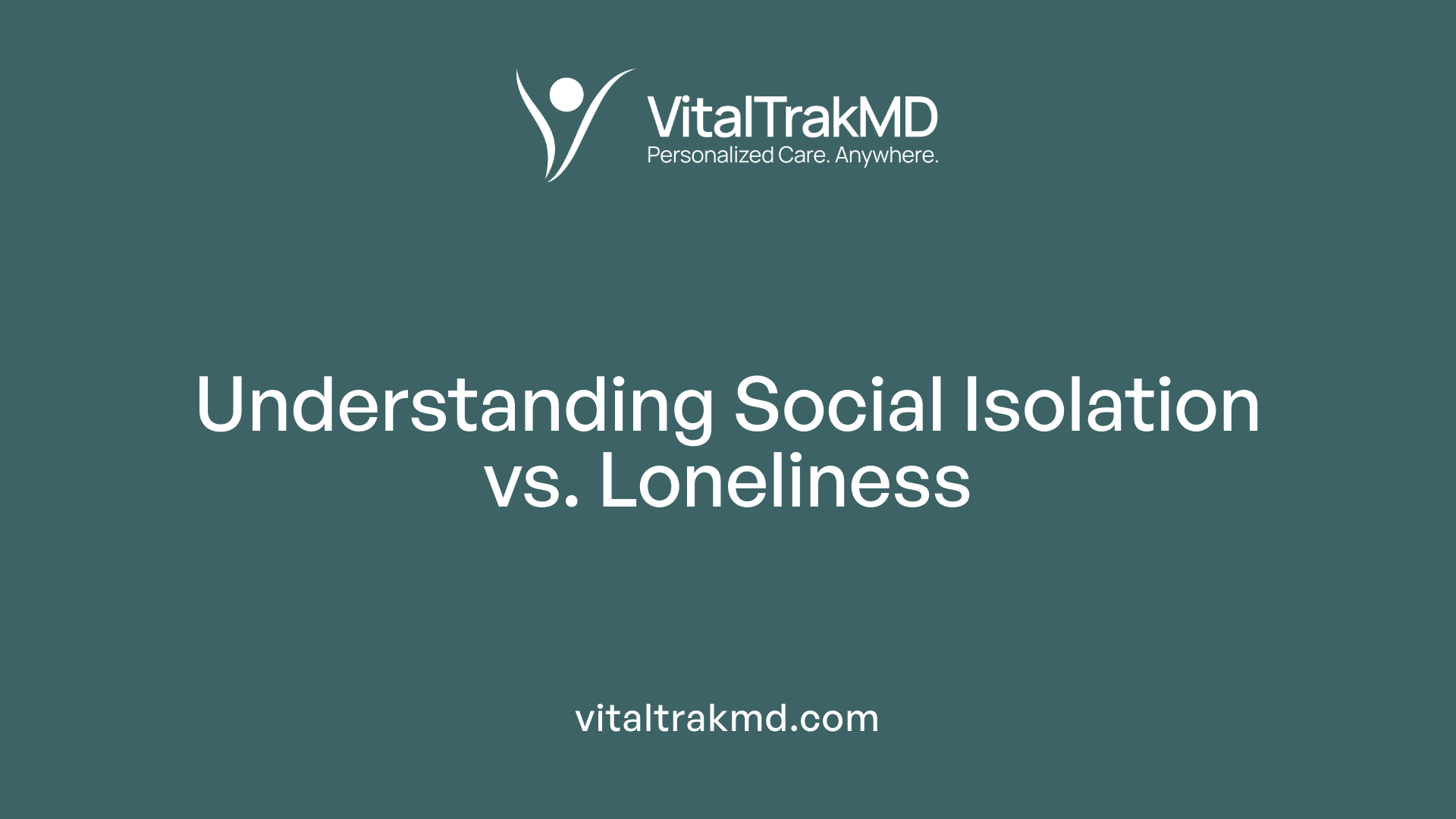
What is social isolation and how does it differ from loneliness?
Social isolation is an objective condition that refers to a lack of social contacts and limited interaction with others. It’s characterized by measurable factors such as living alone, having few social relationships, or infrequent participation in social activities. For example, an older adult who lives alone and rarely engages in community events is considered socially isolated.
Loneliness, on the other hand, is a subjective feeling of distress and unmet social needs. It occurs when a person perceives a gap between the social relationships they desire and those they actually have. An individual might be surrounded by others but still feel lonely if their emotional or social needs are not fulfilled.
How are these phenomena related but different?
While they often occur together, social isolation and loneliness are distinct concepts that impact health differently. Social isolation is an objective measure, easily identified by circumstances such as living alone or having minimal social contact. Contrastingly, loneliness is a personal experience, which can happen even in the presence of many people.
Research indicates that social isolation can lead to loneliness, but not always. Conversely, some individuals may feel lonely despite having frequent social interactions, especially if those interactions lack emotional depth or meaningful connection.
Why do older people tend to isolate themselves?
Older adults often find themselves more prone to social isolation for several reasons. Physical health problems, mobility limitations, sensory impairments like hearing or vision loss, and chronic illnesses can reduce their ability to participate in social activities.
The loss of loved ones, retirement from work, or relocation to new environments can also diminish their social networks. Moreover, changes in routines, reduced transportation options, or living alone can discourage social engagement. Additionally, psychological factors such as social anxiety, depression, or fear of stigma further contribute.
This combination of health, environmental, and psychological factors makes it challenging for many seniors to stay connected socially. Addressing these issues involves community programs, encouraging participation in social activities, and supporting technology use to maintain relationships.
How can understanding these differences inform interventions?
By recognizing the distinction between social isolation and loneliness, healthcare providers and caregivers can tailor interventions more effectively. For those objectively isolated, solutions like enhancing transportation, community outreach, and social programs can be beneficial.
For individuals experiencing loneliness, emotional support, counseling, and fostering meaningful relationships are vital. Strategies such as social activities, volunteer work, and digital communication tools like video calls can provide both social contact and emotional fulfillment.
Understanding these concepts underscores the importance of a comprehensive approach in promoting mental and physical health among older adults, emphasizing both increasing social contact and improving the quality of social interactions.
The Biological and Health Consequences of Loneliness and Social Isolation
How does social isolation impact inflammation and the immune response?
Loneliness and social isolation trigger biological stress responses that directly affect the immune system. When seniors experience chronic loneliness, their bodies activate defense mechanisms that promote inflammation, which is a contributor to many chronic diseases. Elevated inflammation levels have been linked to ailments such as Alzheimer’s disease and cardiovascular issues.
Furthermore, social isolation impairs immune cell function, reducing the body's ability to fight off infections. Weakened immune responses make older adults more susceptible to illnesses and can delay their recovery, increasing their overall health risks.
What is the connection between social isolation and chronic diseases like Alzheimer’s and heart disease?
Social isolation is strongly associated with an increased risk of developing chronic conditions such as heart disease, high blood pressure, and diabetes. The stress hormones released during loneliness promote inflammation, which can lead to arterial plaque buildup, atherosclerosis, and eventually stroke or heart attacks.
Studies have also linked loneliness with poorer cognitive health, raising the risk of dementia, including Alzheimer’s disease. The mental and physical stress caused by social disconnection can accelerate brain decline, further compounding health deterioration in seniors.
How does loneliness affect immune cell function and susceptibility to infections?
Chronic loneliness can diminish immune cell effectiveness, weakening the immune system's ability to respond to pathogens. This reduction in immune resilience increases susceptibility to infections such as influenza and pneumonia.
Older adults experiencing social isolation are not only more vulnerable to catching illnesses but also face longer recovery periods. Physical inactivity and stress related to loneliness further exacerbate these health vulnerabilities, underlining the importance of maintaining social connections for immune health.
| Aspect | Effect | Additional Details |
|---|---|---|
| Inflammation | Promotes process leading to chronic diseases | Activation of biological defense mechanisms increases inflammation levels |
| Immune Function | Weakens immune response | Reduced immune cell activity and resistance |
| Susceptibility | Higher risk of infections | Increased vulnerability to illnesses like flu and pneumonia |
| Long-term Impact | Accelerates aging and disease progression | Chronic inflammation and immune weakening contribute to premature aging and illness progression |
Engaging in social activities and community programs that foster connections can help mitigate these biological effects by reducing stress and promoting physical and mental well-being.
Mental and Emotional Challenges among Older Adults Facing Social Disconnection
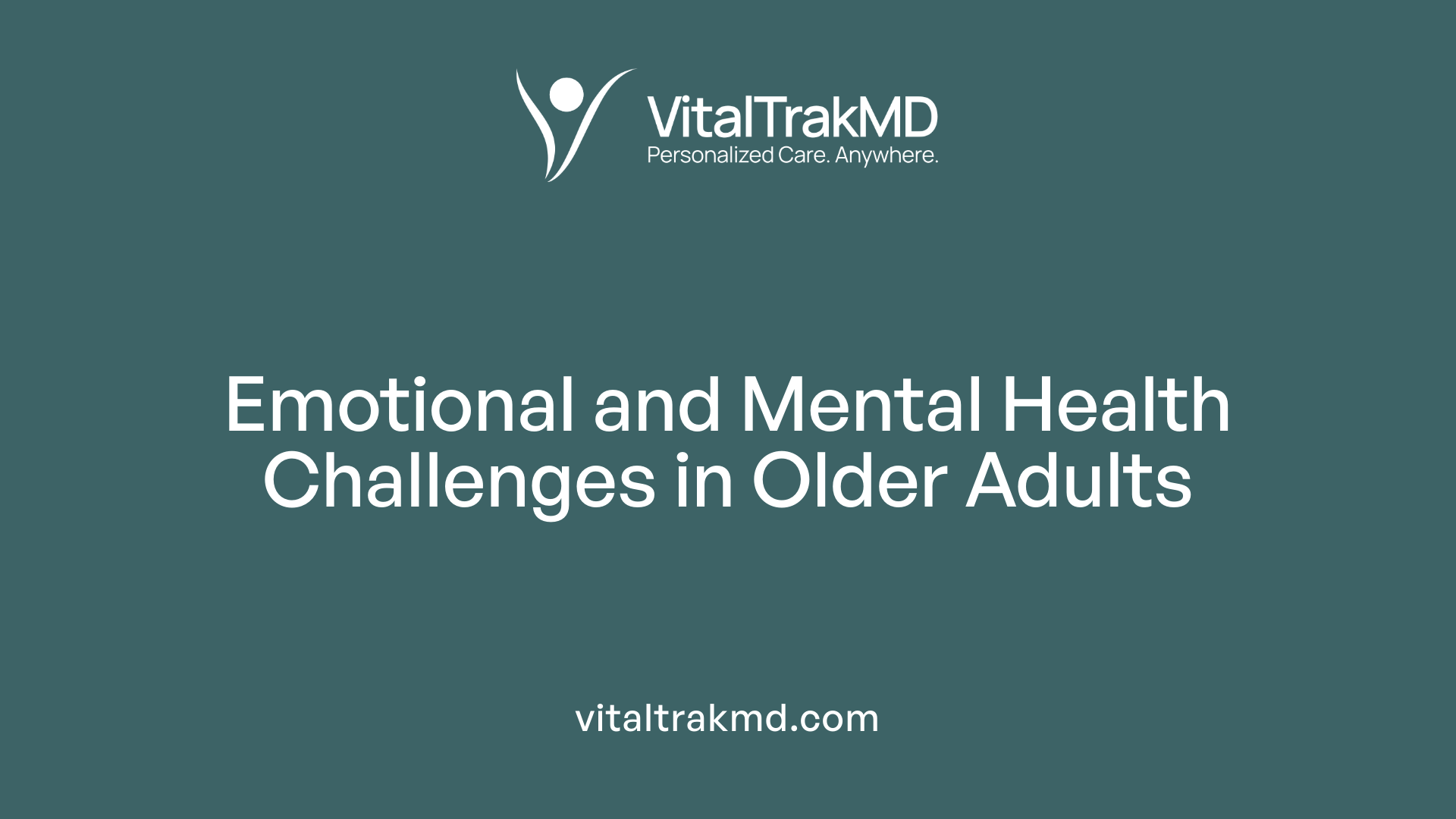
What are the emotional and mental health challenges faced by older adults due to social disconnection?
Older adults who experience social disconnection often face profound emotional and mental health difficulties. Loneliness and social isolation can lead to heightened feelings of depression and anxiety, which are common concerns among seniors. Research shows that loneliness can trigger emotional pain, feelings of being disconnected from others, and a sense of abandonment.
Prolonged social withdrawal doesn’t just affect mood; it can also accelerate cognitive decline. Studies indicate that social isolation is linked to poorer cognitive function and an increased risk of developing dementia, including Alzheimer’s disease. Social engagement acts as a protective factor, helping to maintain mental acuity and emotional resilience.
The mental strain of feeling isolated can increase stress levels, which in turn affects brain health. Chronic loneliness can activate biological stress responses that impair mental stability, making older adults more susceptible to mood disorders such as depression and even suicidal ideation.
Moreover, the emotional pain of disconnection hampers the development of coping skills, leaving seniors more vulnerable during stressful life events like the loss of loved ones or declining health. Addressing these challenges requires a multifaceted approach, including social interaction, mental health support, and community engagement, to help older adults regain a sense of purpose, connection, and mental well-being.
Understanding and mitigating these psychological impacts are essential for improving the quality of life and longevity for older individuals facing social disconnection.
Strategies to Mitigate the Impact of Loneliness and Social Disconnection
What strategies can be used to prevent, address, or mitigate the emotional toll of social isolation on seniors?
Addressing social isolation and loneliness in older adults requires a comprehensive approach that incorporates multiple strategies to improve their emotional and physical well-being.
One effective method is engaging seniors in community and social activities. Participation in hobbies, volunteer work, dance classes, or book clubs can foster meaningful social interactions and create a sense of purpose. Community centers and senior programs designed to promote socialization are valuable resources.
Leveraging technology and social media is another vital strategy. Training seniors to use smartphones, tablets, and platforms such as Skype, Facebook, or WhatsApp can help maintain connections with family and friends, especially for those who are homebound or have mobility issues. Virtual participation in group activities and online classes can also reduce feelings of loneliness.
Maintaining routines and purposeful activities supports mental health. Encouraging regular daily schedules, such as walking, gardening, or attending religious or cultural events, helps establish stability and a sense of normalcy. These activities not only promote physical health but also foster community involvement.
Involving pets and familiar environments also plays a role in reducing feelings of loneliness. Pets provide companionship and emotional support, while familiar settings, like participating in neighborhood walks or spending time in parks, help seniors feel connected to their surroundings.
Summary of Strategies:
| Strategy | Description | Benefits |
|---|---|---|
| Community and social activities | Participating in local groups, classes, and events | Promotes social bonds, increases physical activity |
| Use of technology and social media | Learning to communicate online | Maintains relationships, reduces isolation |
| Maintaining routines | Daily activities and purposeful engagement | Supports mental stability, enhances mood |
| Involving pets and familiar environments | Pets and outdoor spaces | Provides emotional comfort and connection |
By implementing these approaches, caregivers, healthcare providers, and communities can reduce the emotional toll of social isolation, helping older adults lead more connected, healthier lives. Early screening and personalized interventions are essential components to ensure effective support for vulnerable seniors.
Overall, fostering social connections through engagement, technology, routines, and familiar environments plays a crucial role in improving mental health and quality of life among older populations.
Community Interventions and Policies for Promoting Social Engagement
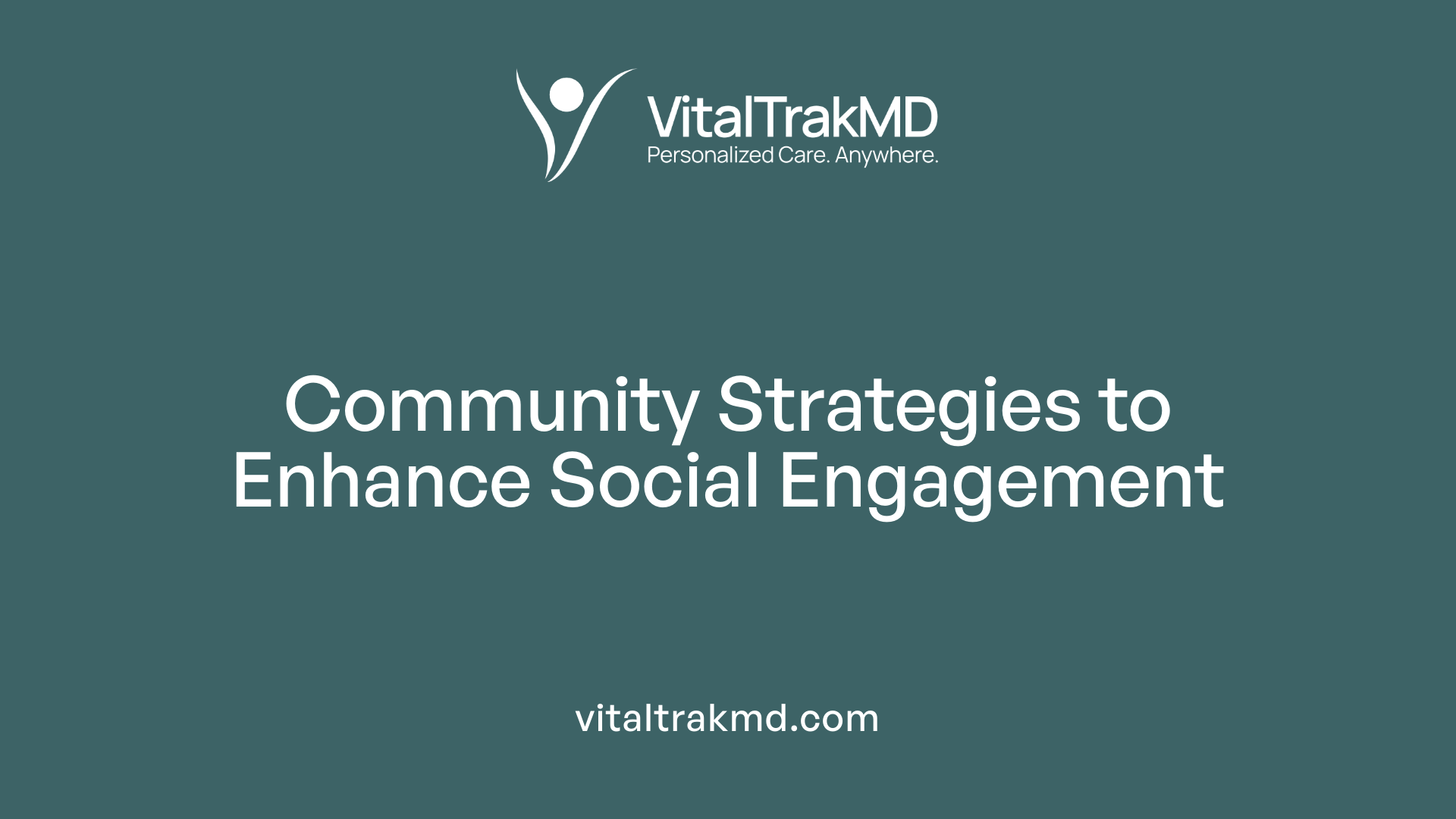 What community interventions are effective for improving social engagement among seniors?
What community interventions are effective for improving social engagement among seniors?
Effective community solutions for enhancing social involvement among older adults encompass various strategies that foster connections and promote well-being. Group-based activities, such as arts classes, dance sessions, and physical exercise programs, encourage social interaction while also supporting physical health. These activities provide a sense of community and purpose.
Intergenerational programs, where young and older members participate together, offer mutual benefits, enhance understanding, and reduce feelings of loneliness. Volunteer opportunities within local organizations further help seniors stay connected and contribute to their communities. Support groups—focused on mental health, chronic disease management, or shared interests—create safe spaces for older adults to share experiences and build relationships.
Leveraging technology plays a crucial role in overcoming mobility challenges. Social media platforms, virtual classes, and communication tools such as video calls allow seniors to stay in touch with loved ones and participate in community activities from home. Addressing digital literacy barriers ensures that older adults can effectively access these resources.
Creating supportive neighborhood environments also significantly contributes to social engagement. Accessible transportation options enable seniors to attend social activities easily. Green spaces and communal areas promote outdoor gatherings and spontaneous social interactions.
Policies promoting age-friendly community design—such as zoning that encourages mixed-use developments, pedestrian-friendly streets, and safe outdoor spaces—enhance opportunities for social participation. Collaborations among healthcare providers, local governments, and community organizations ensure that programs are tailored to meet the unique needs of older residents, thereby maximizing their participation and impact.
What policies or evidence-based approaches exist to reduce loneliness and its health impacts on older populations?
Reducing loneliness among seniors requires comprehensive policies grounded in evidence-based practices. One promising approach is social prescribing, which involves healthcare providers referring patients to community activities, support groups, or social services. While some studies demonstrate reductions in hospital visits and improved well-being, the overall evidence remains mixed, highlighting the need for ongoing evaluation.
Community engagement initiatives, including organized support groups and peer-led programs like SilverSneakers, have shown benefits such as increased activity levels and social bonds. These programs often promote physical activity alongside social contact, addressing both health and emotional needs.
Technological interventions are increasingly part of the solution. Training older adults in the use of the internet, social media, and communication devices can bridge gaps created by physical separation. Social robots and virtual assistants offer companionship and aid in daily routines, although challenges like affordability and digital literacy must be addressed.
Addressing primary health risks associated with loneliness involves targeted therapies—for example, hearing aids to reduce social withdrawal caused by hearing loss or mental health services like cognitive-behavioral therapy to combat feelings of isolation. Creating environments that facilitate accessibility through improved transportation and neighborhood design supports ongoing social participation.
In summary, integrating social, technological, and environmental strategies within community and policy frameworks offers a multidimensional approach to mitigating loneliness and its adverse health effects among older populations. Continued research and adaptation ensure these approaches effectively meet the evolving needs of aging societies.
The Role of Community and Policy in Supporting Healthy Aging
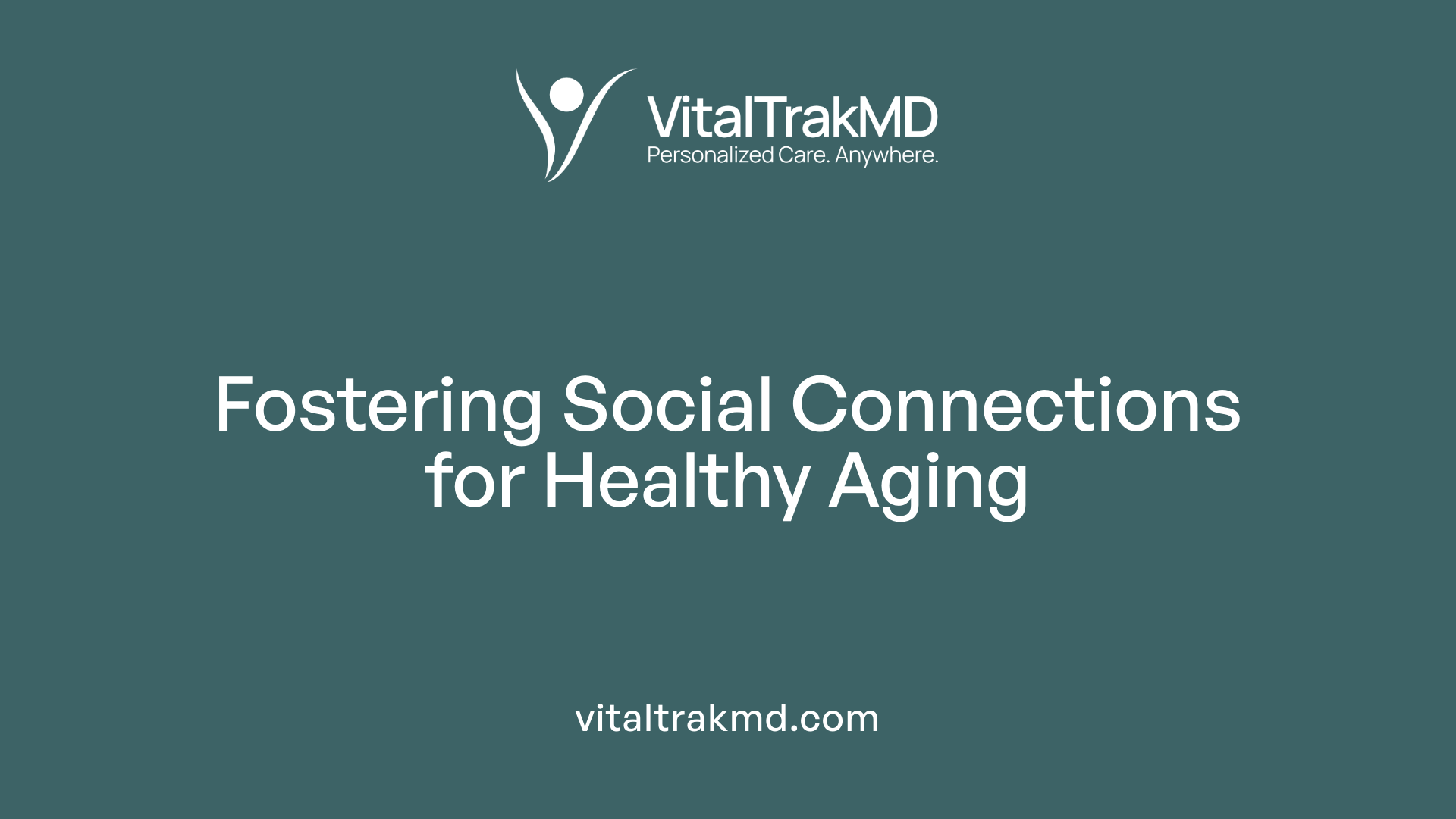
Importance of social connection for longevity and well-being
Maintaining social connections is crucial for healthier, longer lives among older adults. Engaging with family, friends, and community not only fosters emotional support but also promotes physical health and cognitive function. Research shows that social interaction can extend lifespan, improve mental health, and reduce risks of conditions such as depression and dementia. The feeling of belonging and purpose derived from social ties enhances overall well-being and resilience against health challenges.
How does social isolation affect cognition, activity levels, and overall health status in seniors?
Social isolation has notable negative effects on seniors' cognition, physical activity, and health. It is linked to declines in various cognitive functions, including memory, attention, and processing speed, and is associated with a greater risk of developing dementia—including Alzheimer’s disease. Biological factors like increased inflammation and brain volume loss mediate these effects. Additionally, social disconnection often leads to decreased physical activity, further compromising health and increasing vulnerability to chronic illnesses. These combined impacts underscore the importance of fostering social engagement to preserve cognitive and physical health.
Current global and national initiatives
Several initiatives worldwide aim to combat loneliness and bolster social engagement among older adults. The WHO’s Decade of Healthy Ageing emphasizes integrated care and mental health strategies, promoting community-based programs and social support systems. Countries like the Netherlands and the U.K. have launched campaigns such as “United Against Loneliness” and the “Campaign to End Loneliness,” which focus on social prescribing, home visits, and community activities. In the U.S., programs like Inspira LIFE work to improve health outcomes through social participation, while telehealth and online groups have gained prominence, especially during the COVID-19 pandemic.
The need for comprehensive, multi-sector efforts
Addressing social isolation in aging populations requires coordinated efforts across healthcare, social services, government agencies, and community organizations. Policies should promote accessible transportation, age-friendly environments, and digital literacy to facilitate social participation. Healthcare systems are encouraged to screen routinely for loneliness and social isolation, especially for those with chronic or mental health conditions. Building resilient support networks and integrating social health into routine care can significantly improve seniors’ quality of life and reduce healthcare costs. Continued research and investment are vital for developing effective, scalable interventions tailored to diverse communities and individual needs.
The Urgency of Addressing Social Isolation in Aging Populations
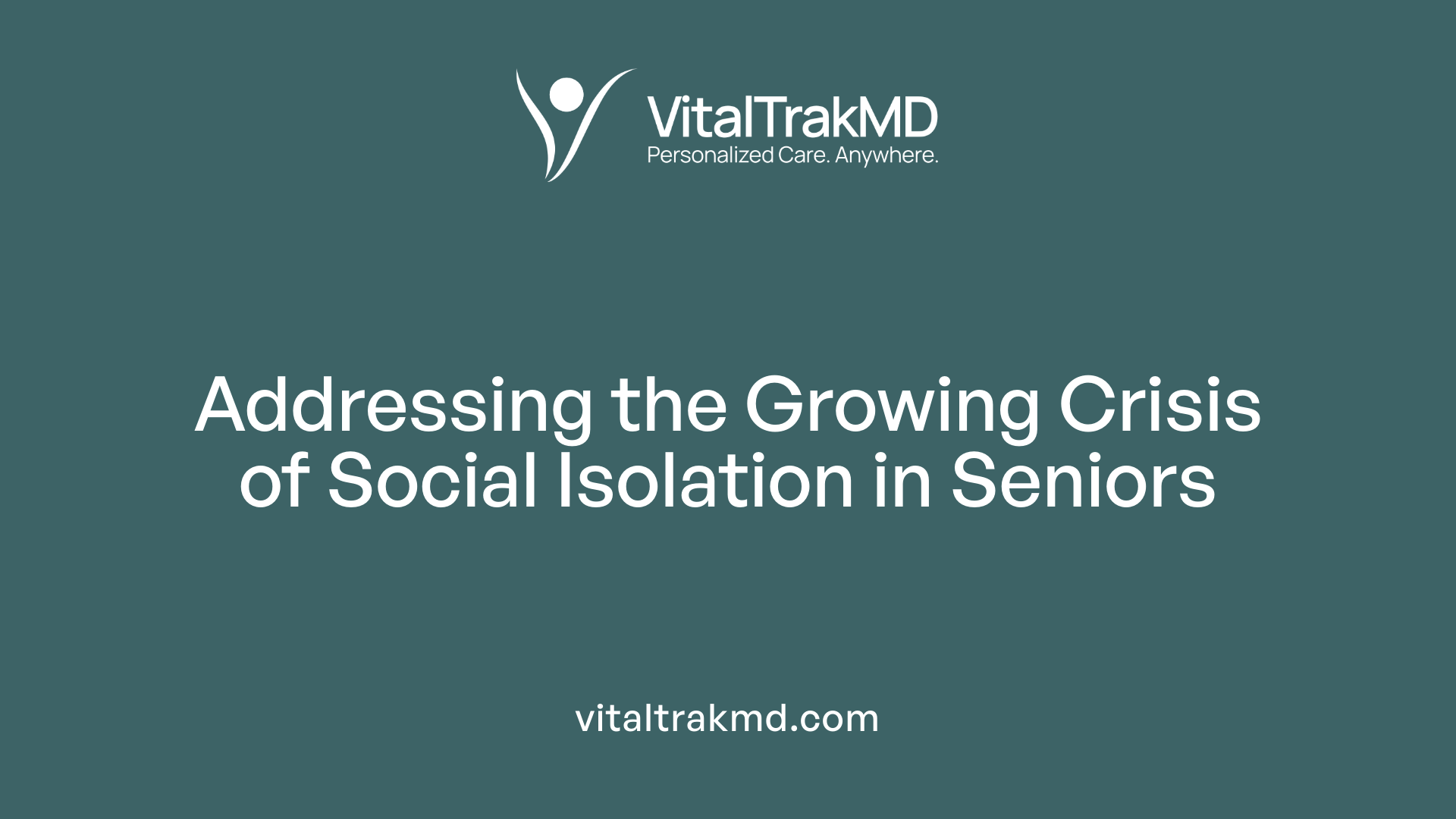
Projected demographic shifts and health burdens
By 2030, it is estimated that one in six people worldwide will be aged 60 or over. As the aging population grows, so do the health challenges associated with social isolation and loneliness. Studies show that about 28% of older adults in the U.S. live alone, and nearly 56% report feelings of loneliness. These conditions significantly increase risks for health problems such as heart disease, depression, cognitive decline, and even early death. The biological impacts include activation of inflammatory responses and weakened immunity, making seniors more vulnerable to infections and chronic illnesses. Moreover, loneliness accelerates cognitive decline, boosting the risk of Alzheimer’s disease and dementia, thereby inflating the future healthcare burden.
Economic and societal costs
The societal and economic repercussions of social isolation are profound. It is estimated that social isolation contributes to over $6.7 billion in Medicare expenditures annually. Beyond direct healthcare costs, isolation and loneliness affect mental health, leading to higher rates of depression, anxiety, and suicidal ideation among the elderly. Socially isolated seniors are more likely to be hospitalized, experience longer recovery times, and face increased mortality risk. These outcomes not only strain healthcare systems but also diminish the quality of life for seniors, underscoring the need for effective preventive strategies.
Importance of preventative measures and early intervention
Preventing social isolation and loneliness starts with policy and community initiatives. Evidence-based approaches include social prescribing models that link seniors to local programs and activities, which have shown promising results like reduced hospital use. Support groups, peer support networks, and programs such as SilverSneakers help foster social bonds and promote physical activity.
Technological solutions also play a role. Training older adults to use smartphones, social media, and video calling can help maintain social ties, especially for those with mobility or transportation issues. Innovations like social robots and virtual companions are emerging as supplementary tools, though barriers like access and digital literacy must be addressed.
Furthermore, modifying the environment to be more age-friendly—improving transportation, neighborhood design, and community spaces—can facilitate social interaction and prevent isolation. Policies targeting health conditions that contribute to social withdrawal, such as hearing loss or mobility impairments, through devices like hearing aids or therapies like cognitive behavioral therapy, are equally critical.
By adopting a comprehensive approach that includes community engagement, technological innovation, environmental design, and health interventions, societies can mitigate the adverse health effects of social isolation among older adults. Early intervention remains essential to foster healthier aging populations and reduce the significant health and economic burdens ahead.
Addressing the Hidden Crisis: Promoting Social Connection for Better Senior Health
The evidence underscores the critical importance of social engagement for healthy aging. Tackling social isolation and loneliness through innovative community programs, supportive policies, and technological solutions can reduce the burden of chronic diseases, mental health disorders, and mortality among seniors. As global demographics shift toward older populations, it is imperative for public health systems, policymakers, communities, and families to prioritize social connection as a fundamental component of health. Promoting social participation, fostering inclusive environments, and implementing early interventions will not only improve individual well-being but also alleviate significant societal costs associated with aging and health care.
References
- Social isolation, loneliness in older people pose health risks
- Loneliness and Isolation | Issues Facing America's Seniors
- 1 in 3 older adults still experience loneliness and isolation
- Mental health of older adults - World Health Organization (WHO)
- Loneliness and Social Isolation — Tips for Staying Connected
- Social Isolation and Loneliness in Older Adults - JAMA Network
- Uncovering the impact of loneliness in ageing populations
Recent articles
Want to Feel Better and Live Healthier?
Join hundreds of patients taking control of their health with personalized care that fits their life – not the other way around.
Rated 4.8/5 by 32+ customers







